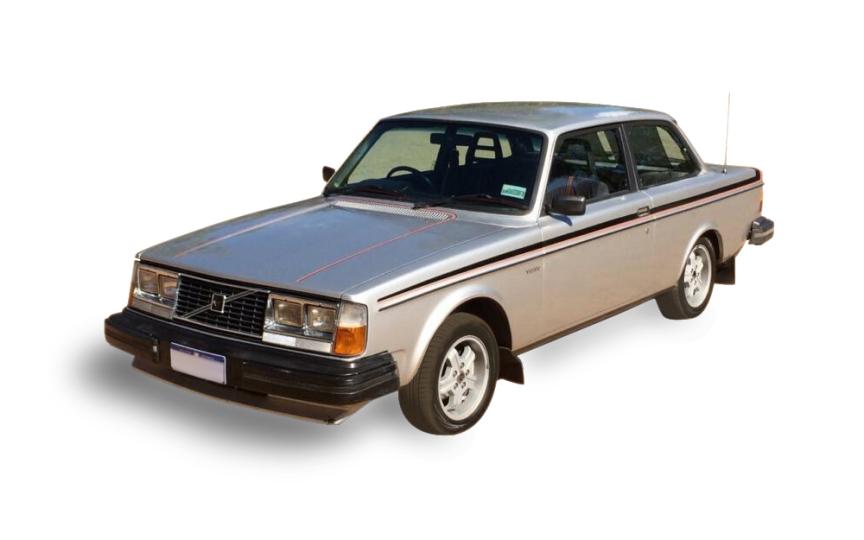Description
This guide has been written for Volvo 242 GT enthusiasts, and attempts to collate all the history, information and specifications for the Volvo 242 GT from many sources in one convenient reference point. If you feel there is any information missing or something that can be improved or corrected, please click the contact author button above, or email us directly: classicregister@gmail.com.
The 242 GT was a special edition (sports oriented) version of the 240 series, available only in 2-door sedan in limited markets from 1978 through to 1981. It is suggested that the car was originally designed to compete with the BMW 323i, but there were plenty of other relevant competitors in this sector such as high spec versions of the Opel Commodore C, Ford Cortina and of course its home grown competitor, the Saab 99. In any event, the aim of the 242 GT was to shake off Volvo's "safe and boring" image, and to achieve that on a small budget. The 242 GT ended up being the start of greater things to come - including the GLT, GLT Turbo and the 240 Turbo Evolution. These later developments of the 242 chassis led to great success in touring car racing globally, with victory for the 240 Turbo in the 1985 European Touring Car Championship. The later success of racing bricks really did start with the 242 GT.
Throughout this guide, we have referred to "Series 1" and "Series 2" cars. This is a reference to the facelift that occurred across the 200 Series Volvos in 1979, with the most prominent change in the form of a redesigned rear end and tail lights. Further specific details of the Series 1 and 2 cars are identified in each section of this page.
Production:
The 242 GT proved a very popular special edition Volvo, and has a strong international following in the markets where it was offered. The Volvo 242 GT was first introduced and promoted to the public in late 1977, but did not officially go on sale until the Spring of 1978 in some markets. The 242 GT was built in the Torlanda plant (Gothenburg), in Sweden.
Unfortunately, precise production data has not been found. However, assuming we are interpreting the translation correctly, volvo242gt.se suggests that 5,000 units were built (but we note that it is unclear whether that statement is a reference to the later Series II cars alone). However, even if production numbers were higher, the 242 GT is a super-minority out of the nearly 250,000 2-door 240 series cars built globally, and a very rare classic today. The following list of production information has been gathered from numerous forums and online sources which (may) give some insight into the 242 GT production figures:
- Sweden (despite being the country of origin) only received a total of 670 242 GTs (265 units in 1978 and 405 units in 1979 according to volvo242gt.se). No 242 GT was offered after 1979.
- Volvo242.se suggests Australia received 630 cars. This is approximately consistent with discussion on Australian Volvo forums which have frequently suggested a figure of around 600.
- Series 2 cars were delivered to Swedish customers (as 79 model year cars) from as early as November 1978.
- NZ is estimated to have received only 20 cars (and subsequently some Australian cars have been imported to NZ). We have spotted only a few NZ 242 GTs for sale over the last decade, so this is consistent with a very low number having been sold there.
- 200 242 GTs (painted black) were sold in Canada from 1980. We presume this figure of 200 is on top of the standard silver Mystic Metallic 242 GTs.
- We have not been able to find any numbers otherwise for the US and Canada. Presumably this would have been the largest market outside of Europe, and constitute several thousand cars.
- The 242 GT was never sold in the UK. The 242 GT also does not appear in Dutch brochures in relevant years, so we presume it was also never offered in that market.
- The 242 GT appears in German, Australian, Canadian and US brochures.
